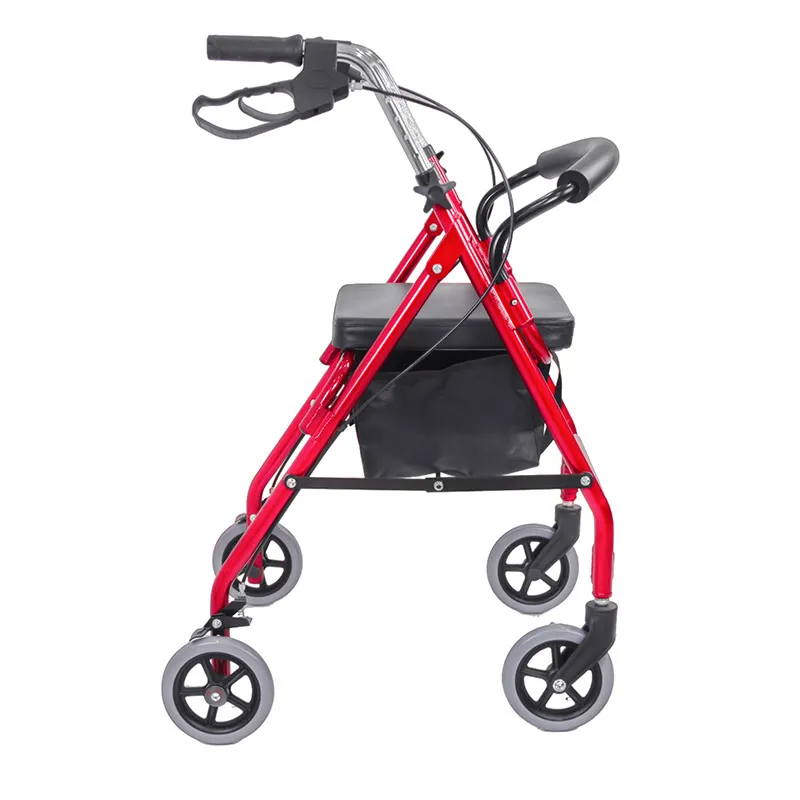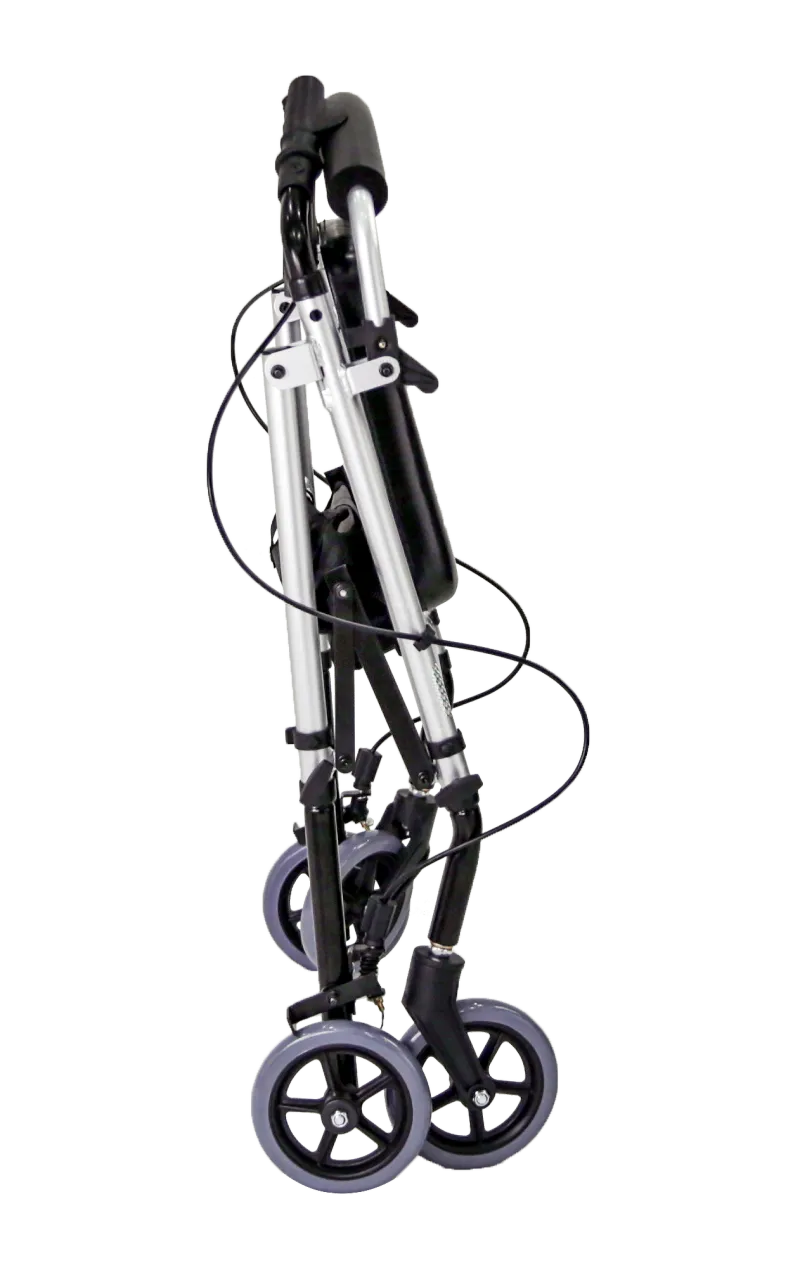
Is it better to use a cane or a rollator walker?
2024-05-22 15:30
Crutches and rollator walkers are commonly used assistive walking tools for the elderly or those with difficulty walking. Choosing which tool is more suitable requires judgment based on individual circumstances and needs. This article will focus on the question "Is it better to use a cane or a rollator walker?", explore the advantages, disadvantages and applicable scenarios of the two, and make relevant suggestions.
Is it better to use a cane or a rollator walker?
When choosing a cane or rollator walker, there are two main factors to consider: the user's physical condition and the level of support required.
Advantages of crutches: Crutches provide simple and flexible support during walking. For cases of weakness or pain on one side of the body, crutches can provide effective support and help maintain balance. Additionally, crutches are lightweight, portable, and easier to maneuver when going up and down stairs.
Advantages of rollator walker: Rollator walker provides more comprehensive support and is suitable for people with poor balance ability or unstable feet. Rollator walkers are usually equipped with wheels and handrails to help users walk on flat ground. In addition, the rollator walker can provide a temporary seat for users to rest.
Applicable scenarios: Crutches are suitable for people who walk short distances or need to support one side of the body. The rollator walker is more suitable for users who need more comprehensive support or walk long distances.
When choosing a cane or rollator walker, it is important to make a decision based on your individual needs and physical condition to ensure comfort and safety while walking.

How to choose the right crutch?
Choosing the right crutch is crucial to the user's walking safety and comfort. Here are a few key elements to consider when choosing a cane:
Crutches Length: The length of the crutch should be adjusted to the height of the user. When standing, the handle of the crutch should be flush with the user's wrist, which allows the arm to maintain a natural curve and provide optimal support and comfort.
Types of crutches: There are two types of crutches: single-point and multi-point. Single-point crutches are lightweight and suitable for walking short distances; multi-point crutches provide more stable support and are suitable for users who need more support.
Crutch handle: The design of the crutch handle should be ergonomic and provide a comfortable grip. You can choose a handle that fits the size and shape of your hand.
Crutches Material: Crutches are usually made of wood, aluminum alloy or carbon fiber. The choice of materials should be based on user preference and budget.
Trial Adjustment: Before purchasing a crutch, it is recommended to try it out and make adjustments based on your comfort and walking needs.
By comprehensively considering these factors, users can choose the crutch that best suits them and improve comfort and safety when walking.

How to use rollator walker correctly?
Proper use of rolling walkers is essential for walking safety and stability. The following are things you should pay attention to when using rolling walkers:
Adjust the height: Before using the rollator walker, you should adjust the height of the armrests and seat according to your height. This helps maintain an upright posture and improves comfort while walking.
Correct holding: When walking, you should hold the armrests of the rolling walker lightly, maintain the natural bend of your arms, and avoid excessive force.
Proper use of brakes: When you need to stop, you should use the rollator walker's braking system in time to ensure the stability and safety of walking.
Pay attention to ground conditions: When walking, you should pay attention to ground conditions and avoid walking on uneven or slippery surfaces to ensure safety.
Maintain balance: Keep your body balanced when walking and avoid leaning too much on the rollator walker. The rollator walker is an auxiliary tool, not a complete support.
By mastering these methods of using rolling walkers correctly, users can get better support and protection while walking.
Summarize
Crutches and rollator walkers each have their own advantages and applicable scenarios. When selecting and using these two walking aids, decisions should be made based on an individual's physical condition and walking needs. We hope that the information provided in this article can help readers better choose and use walking aids, improve the quality of life and comfort and safety when walking.








